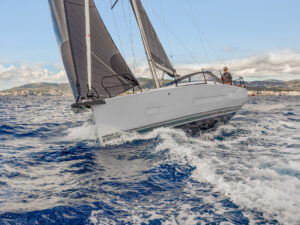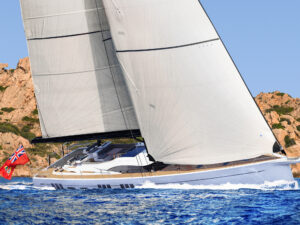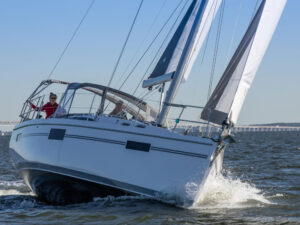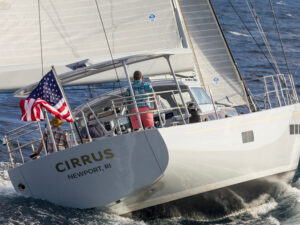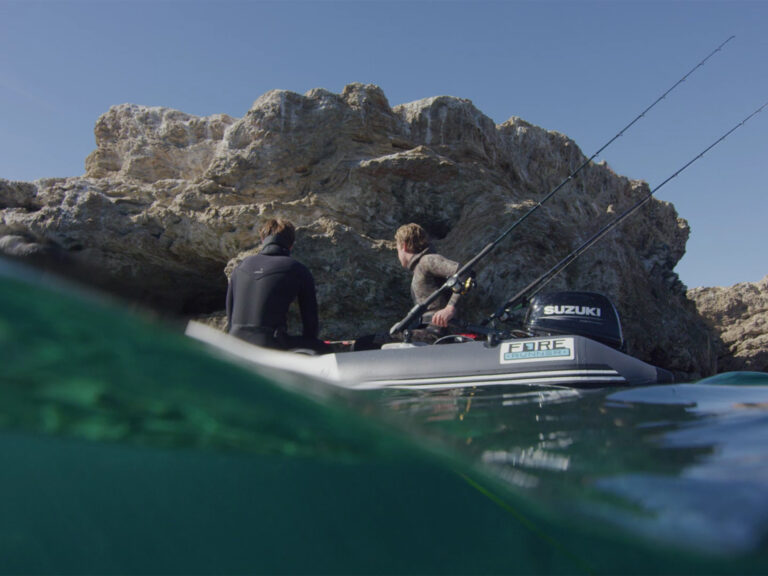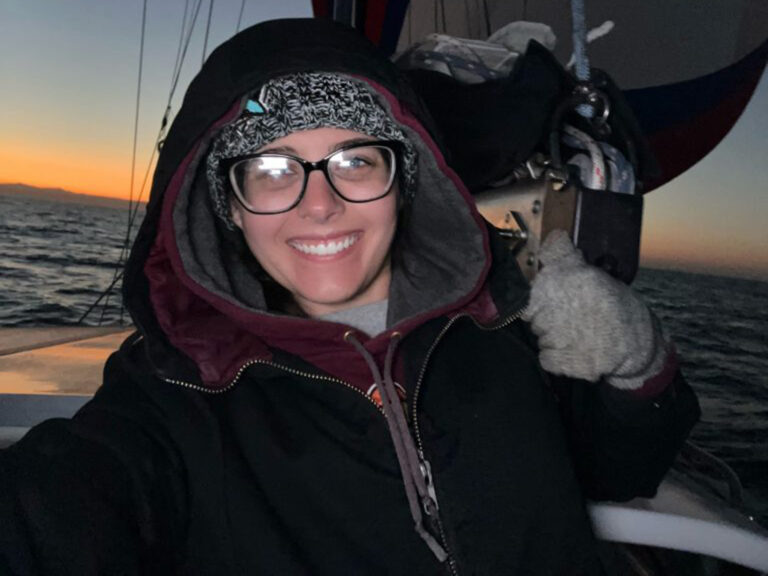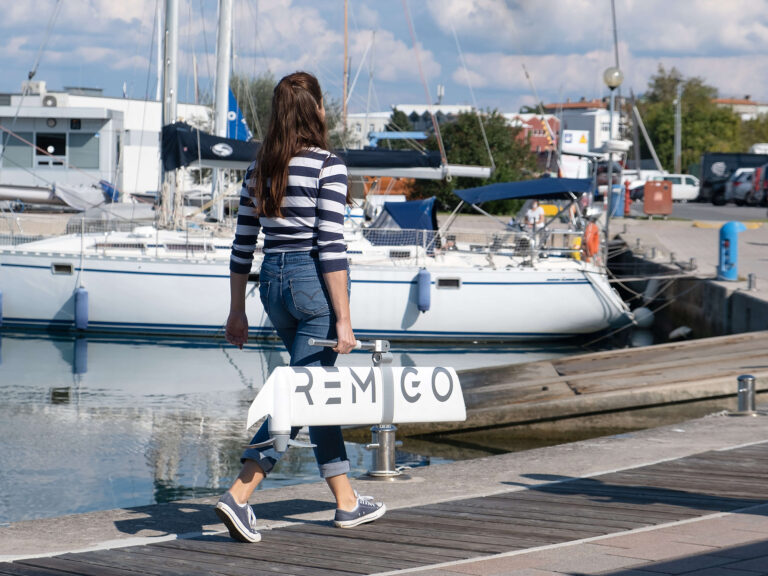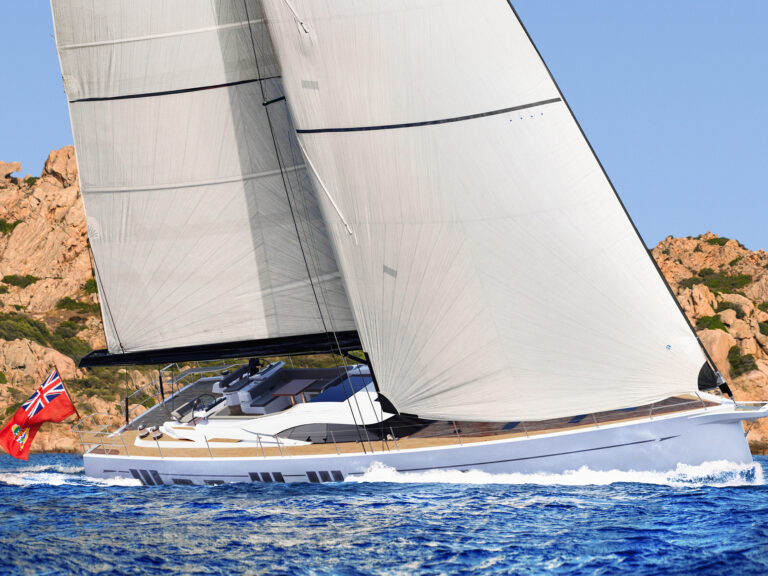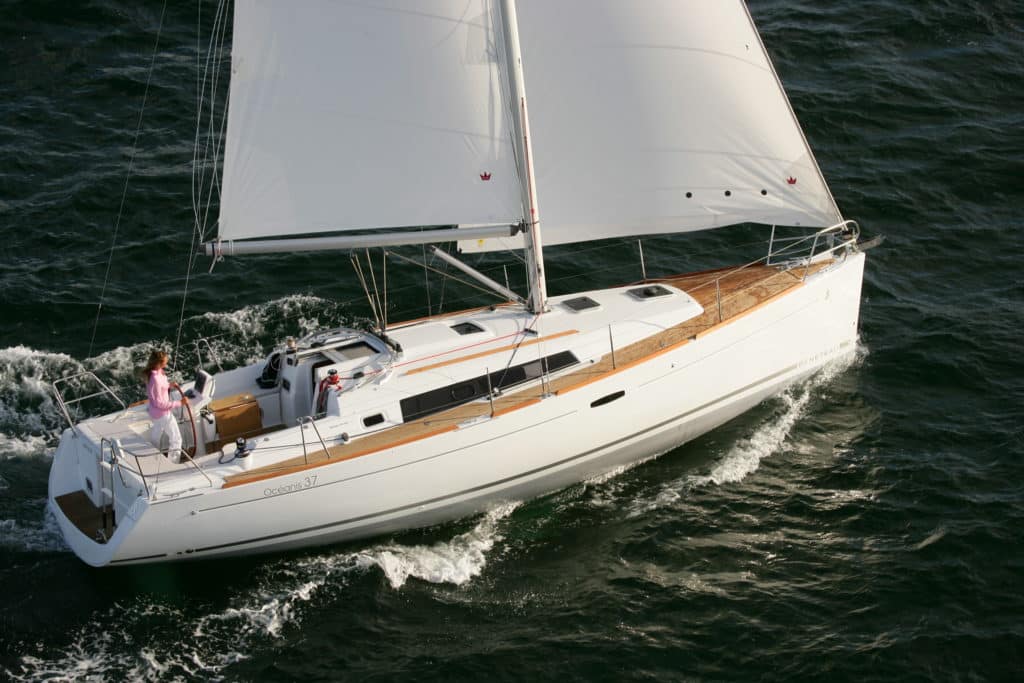
Twenty-first century technology has changed the relationships among boat buyers, boatbuilders, and boat dealers. Buyers, treating sailboats as a commodity, are comparison shopping on the Web, then, trusting the manufacturer to create a reliable product, dickering through the dealer over the color, the extras, and the price. Builders are refining their processes accordingly.
Indications of this trend are evident in the new cruising sailboats that Beneteau USA announced at the U.S. Sailboat Show in Annapolis in October 2006. Beneath the new exterior styling and the svelte interior décor, the latter by high-profile Nauta Design, lie more subtle changes: While revamping the product line, the builder could re-engineer its already trim production line, introducing efficiencies that allow it to offer even more boat for a still, relatively speaking, low price. The counterpoint is some loss of individuality between models. Belowdecks, as above, the three boats Beneteau introduced in 2007, the 43, 40, and 37, bear strong similarities; in some cases, they share components.
In a world where customers choose options with a mouse click, Garth Hitchens, who presides over Beneteau dealer Annapolis Yacht Sales, wonders how long his sales offices and inventory of Beneteaus will remain relevant. Even so, he embraces his role enthusiastically.
As we put a French-built Beneteau 37 through its paces last October, Hitchens pointed out the changes that he and his fellow dealers were requesting of Beneteau for the American version that was then on its way into production at the company’s facility in Marion, South Carolina. An example was the head. As installed on this boat, the bigger marine toilet Hitchens specifies for American clients obstructed the inward opening door-until Hitchens and his crew rehung it, a modification later reflected in the production version from America.
On the Beneteau 37, the companionway hatch has been strikingly refined into a bolt-on, all-in-one contrivance in which the top slide and drop board are articulated yet separable. Separated, the slide can be opened to leave the drop board in place. Connected, the slide takes with it the drop board, which can then be pushed up to stow under the slide. While operating it isn’t intuitive, the unit appears stout enough to survive the learning process.
The companionway itself offers a secure descent from the cockpit to the galley, where the counter and its robust fiddle rails provide further support.
The galley, although necessarily compact to permit access to the sleeping cabin aft of it, has adequate workspace, aided by the front-opening refrigerator that leaves the countertop intact. Storage is a little short: Full-size dinner plates won’t fit in the slender, designer-styled wood-faced cabinets outboard, and no drawers are provided wherein to stow utensils. The centerline double sinks are functional both for their intended purpose and as a handy, secure repository for items in transit to or from the cockpit.
To starboard, the commodious, all-in-one head and shower compartment presents a vista of white, easy-to-clean gelcoat. Slanted mirror-front cabinets outboard above the sink let even the lanky shave without contortions.
The chart desk, located forward of the head, passes the chart-book size test. It has nooks and crannies to hold the navigator’s tools and fascia area for radios and instruments.
The styling in the saloon marks the return of ergonomic functionality-in the Beneteau 37 and the boat’s sister ships, rectilinear settees with square corners invite sitting and reclining in multiple comfortable postures and attitudes. If this is the fruit of contemporary design, long may it stay in vogue. However, the fore-and-aft overhead grabrail is absent, and the stainless-steel “design elements” that decorate the outboard shelves are neither fiddle nor handrail.
Forward, the V-berth cabin has generous standing room, a small dresser, a spacious berth, and, given the hanging locker, drawers, shelves, and shoulder-level cabinets, a variety of stowage options.
The aft sleeping cabin has a generous athwartships berth with sitting headroom at its head, decent dressing room, and three opening ports, one of them located in the transom. A space between the aft bulkhead and the transom creates an extra stowage area and appears to give access to the steering system, but doesn’t-that seems to require some dismantling of the overhead.
Access to the engine is better. The companionway ladder hinges just above the third step (of four). Held up by gas struts, it exposes the entire front of the engine. Panels in the boat’s head and aft cabin reveal service points on the sides.
When getting under way, my first impression was of the vastness of the cockpit-a family of four can sit side by side on the helm bench, the center section of which hinges open, held by a gas strut, to provide access to the transom platform.
The Beneteau 37 has more area in the foretriangle than in the mainsail, although it still sports an easy-to-tame 105-percent genoa. When we were sailing upwind in a gusty breeze, the first reef we took was in the main, and this tamed the helm immediately, although the boat was still a handful in the bigger puffs, and I would’ve appreciated better footing at my preferred steering position on the windward side.
On the wind, the Beneteau 37, showing its Finot-Conq lineage, embarrassed boats of greater waterline length despite having an in-mast furling mainsail. Off the wind, the large headsail helped provide solid performance across a wide range of wind angles.
Under power, the 37 responded well for us in normal maneuvers despite having, Hitchens advised, a rather under-pitched folding propeller. Bringing it to a full stop from full ahead was slow. A fixed or, better yet, a feathering prop would likely help. The prop is on a conventional shaft and far enough aft to get some useful thrust off the rudder. In addition to the 29-horsepower Yanmar, there’s a 40-horsepower option available.
As a package, the Beneteau 37 combines sprightly sailing with generous accommodations. Add in the comprehensive standard outfit, and the sum is a product of predictable quality and should have wide appeal in the new-model market.
Jeremy McGeary is a Cruising World contributing editor. A boat review from our August 2008 issue. To read more Cruising World reviews of Beneteau sailboats, click here. To visit Beneteau America’s website, click here.

